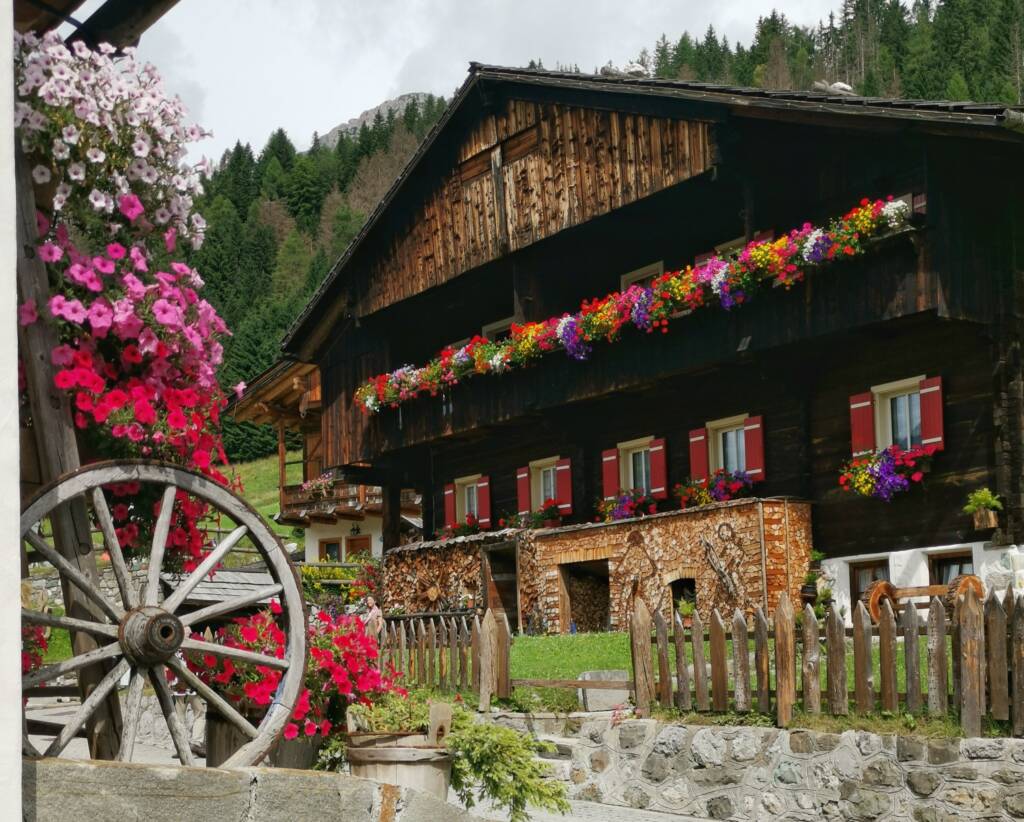In the Fontana hamlet we stop, one by one, in front of the beautiful wooden houses, mostly dating back to the 18th century. On the left is s’Paulan house dating back to 1737, while to the side and in front two houses stand out, both covered with small shingles, rounded wooden boards that served as decoration but also to insulate the walls.
Some houses, partially in stonework, have the family crest painted on the facade, which often depicts the profession of the head of the family. Examples of this include the Schlossar haus and s’Tizn – Prunnar s’Sèffilan haus, the latter with the crest of one of the three families which lived there and the date 1650 painted on the entrance arch.
A few steps on and we reach the s’Plasn haus, dating back to 1707.
Our attention is captured by this solid house, but also by the rare example of keisn that stands in the surrounding meadow. This is one of the last ancient racks on which legumes and cereals, including broad beans, were placed to dry. Very similar to the Harfe found in Tyrolean and Carinthian valleys, the keisn were tall, almost colossal.
The drying of agricultural products or hay also took place on the balconies of rustic outbuildings. The latter were of two types: either attached to the north side of the house, or detached but close by, and included stables for animals on the ground floor and a hayloft on the upper one. Livestock farming (cows, pigs, sheep and goats) provided milk and meat for domestic needs, together with eggs from the poultry. Next to the house or the cottage there was always a kitchen garden, with vegetables and aromatic herbs such as tarragon or flowers such as poppies, whose seeds were used to make sweets. In the fields around the village, cereals such as rye, barley and oats were grown, together with potatoes, cabbages and turnips.
Accompanied by cornmeal (polenta), some products of the local gastronomic tradition have been handed down to the present day and are being rediscovered.

